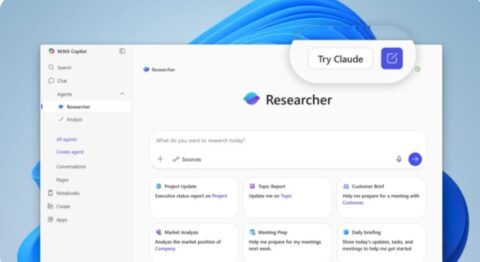Updated: April 8, 2024 (January 9, 2024)
BlogUser beware: When a Microsoft product preview remains perpetual

Microsoft officials are reticent to admit proactively when products are on the deprecation, retirement or graveyard lists. But there are several signs customers can monitor to determine if Microsoft is likely to drop a particular product or service on which they were counting. One of these “omens of doom” is the perpetual preview.
We’ve already written (and podcasted) about several Microsoft on-premises products that could be in the discontinuation danger zone, including Access, Visio, Project. Office Professional Plus, and more. The rule of thumb: Don’t invest in a Microsoft product in which Microsoft itself is lessening its investment.
But it’s not just on-prem legacy products that have an uncertain future. In preparing our various Microsoft enterprise product and service roadmaps here at Directions on Microsoft, we monitor the duration of Microsoft product previews, especially those with few, if any prospects of moving to the general availability (GA) phase. We’ve found the longer a Microsoft preview, the less likely a technology will reach GA.
In the consumer product space, it often matters less whether a product falls into the perpetual preview category. Many cloud services, including Google Search, Bing, and Xbox Cloud Gaming (which is still in “beta”), remained in preview for years, without many users being wiser.
In the enterprise world, however, customers often are unwilling or not permitted to roll out broadly technologies that have not reached GA. Many times, the vendors behind these products don’t support them to the level required by organizations. A preview never has a Service Level Agreement (SLA) associated with it. There may be Microsoft licensing clauses explicitly warning customers they should not be relying on these preview services in production, and if they do, they do so at their own risk.
Further complicating matters, it’s not always an entire product or service that’s in preview, but only specific features within it that may be. This can be confusing because it’s not always clear when a feature is in preview; it might be noted with an easily missed label in the UI or only in documentation or a blog post. There’s no consistency. So, the overall service is marked as GA, and customers adopt it, but they don’t realize they’re using a preview feature.
In some cases, overly long previews can be attributed to strategy and priority changes at Microsoft. (These days at Microsoft, if there’s no AI angle to your Microsoft product, it seems less likely to get internal support or promotion.) Some company watchers also have wondered if Microsoft still releases previews that never become commercially shipping products to try to freeze a market, rather than concede it to a competitor.
“Long previews may occur because there are critical customers that have requested certain features and are using them, but Microsoft doesn’t feel comfortable enough to support those features for everyone. Other times, priorities change before a product reaches general availability, and teams could be dissolved or refocused,” said Directions on Microsoft analyst Rob Sanfilippo.
Perpetual previews: A few examples
Here are a few examples of Microsoft cloud services that were/are in overly long previews
Azure Internet Analyzer: Microsoft announced the public preview of Azure Internet Analyzer in November 2019. Internet Analyzer is a network modeling and measurement tool that collects performance data to help determine whether a different network configuration will offer application performance improvements. In September 2023, Microsoft posted an update to its Azure Updates page acknowledging that Internet Analyzer will be discontinued and all customer data in the service deleted on March 15, 2024. In that update, Microsoft admitted “this tool didn’t achieve the level of customer traction we had hoped for.” Azure Monitor Network Insights seems to be the Microsoft-preferred replacement for Internet Analyzer.
Azure Service Shared Plan: Azure App Service has two base tiers — free and shared — which run an app on the same Azure VM as other App Service apps. These tiers were intended to be used only for development and testing purposes. After many years in preview, we asked Microsoft a while back when the Shared Plan would go GA. The answer: Never (although Microsoft still does charge users for shared CPU compute for the preview.)
Azure Blueprints: Microsoft launched a preview of Azure Blueprints in 2018. The idea behind Azure Blueprints was to enable IT to define a repeatable set of Azure resources that could be applied across an organization. In a note on the Microsoft Learn page about Azure Blueprints, Microsoft acknowledged on July 11, 2026, the Blueprints preview will be deprecated. Microsoft’s guidance is to migrate existing blueprint definitions and assignments to Template Specs and Deployment stacks.
One tool which could be used to monitor the state of Microsoft previews was a Microsoft-developed Web app called Azure Charts. Azure Charts helped track the availability status of various Azure services. But it seems the app is no longer functional due to “budget restrictions” as of just a week or so ago.
Does GA really mean anything anymore?
As we’ve noted, some orgs are unwilling and unable to deploy Microsoft products and services until Microsoft grants them the official GA label. But increasingly, the Directions on Microsoft analysts have been wondering what GA means anymore — especially when Microsoft seems willing to deem a product or service GA after seemingly little testing.
A prime example here is Copilot for Microsoft 365. After a few months of private testing by about 500 to 800 paying selected customers, Microsoft announced Copilot for Microsoft 365 was GA on November 1. On that date, it was available to a small subset of Microsoft’s customer base: Those with Microsoft 365 E3 or E5 who were willing to pay $30 per user per month for 300 seats (minimum) and who purchased it through their Microsoft reps, since it was not on the company price list. There was and is no public beta or free trial for the product. As of today, Microsoft has not gone public as to when it plans to broaden general availability.
Windows is another area where the GA label seems next-to-meaningless anymore. New features are rolled out to customers who aren’t protected by enterprise policies and services after relatively little testing by self-designated Insider testers. The first wave of unmanaged-device customers then test Windows 11 features for a few more weeks or months before Microsoft deems a feature update as ready for business deployment.
Related Resources
Podcast: When should you walk away from a Microsoft product
Microsoft’s Azure updates and changes feed
Azure App Service Shared preview details
What’s next for Azure Blueprints
Goodbye, Azure Charts. We hardly knew you
Ten things you need to know before buying Microsoft 365 Copilot
Duration of Azure Tech Previews Can Indicate Risk (Directions members only)













